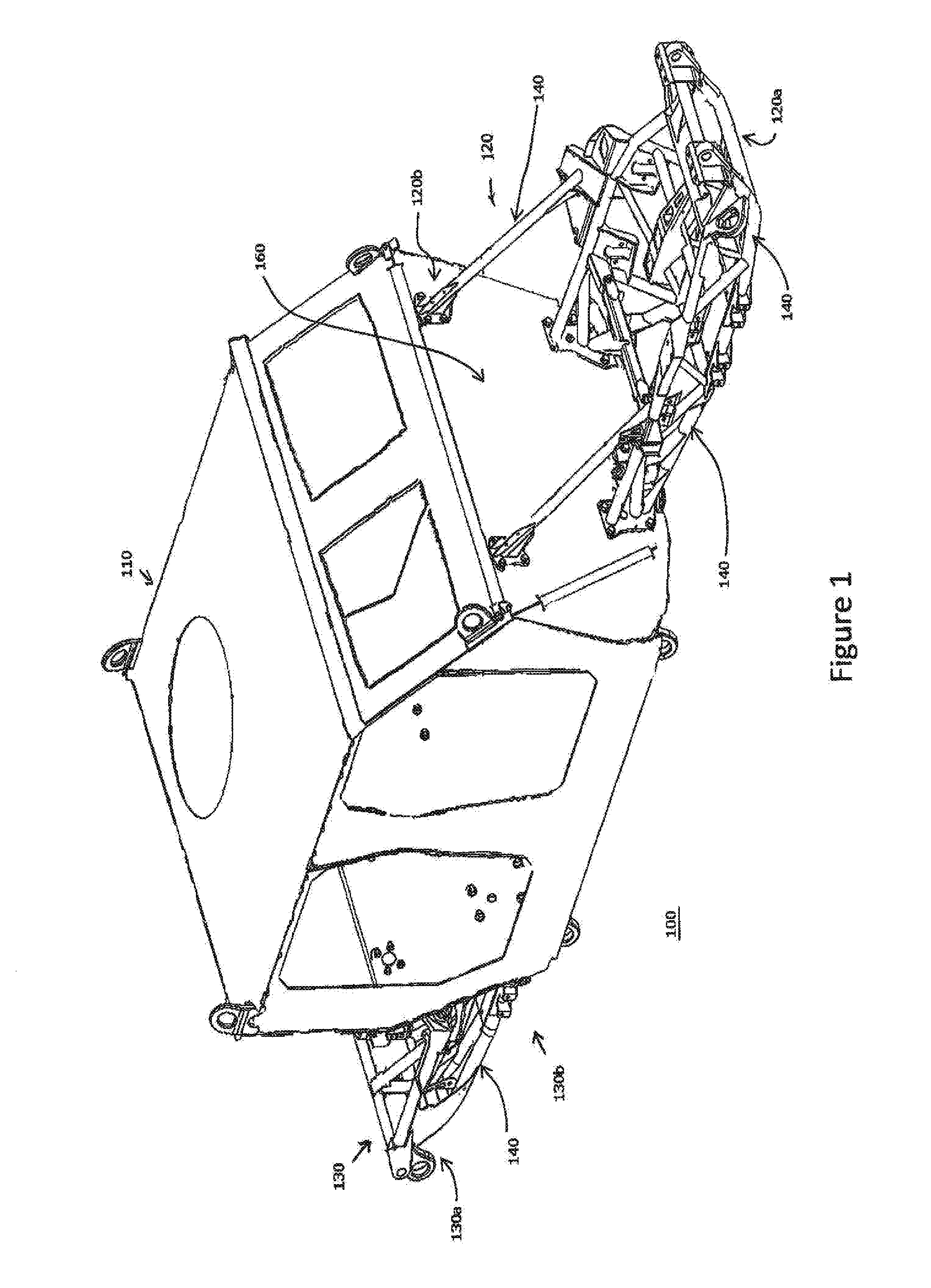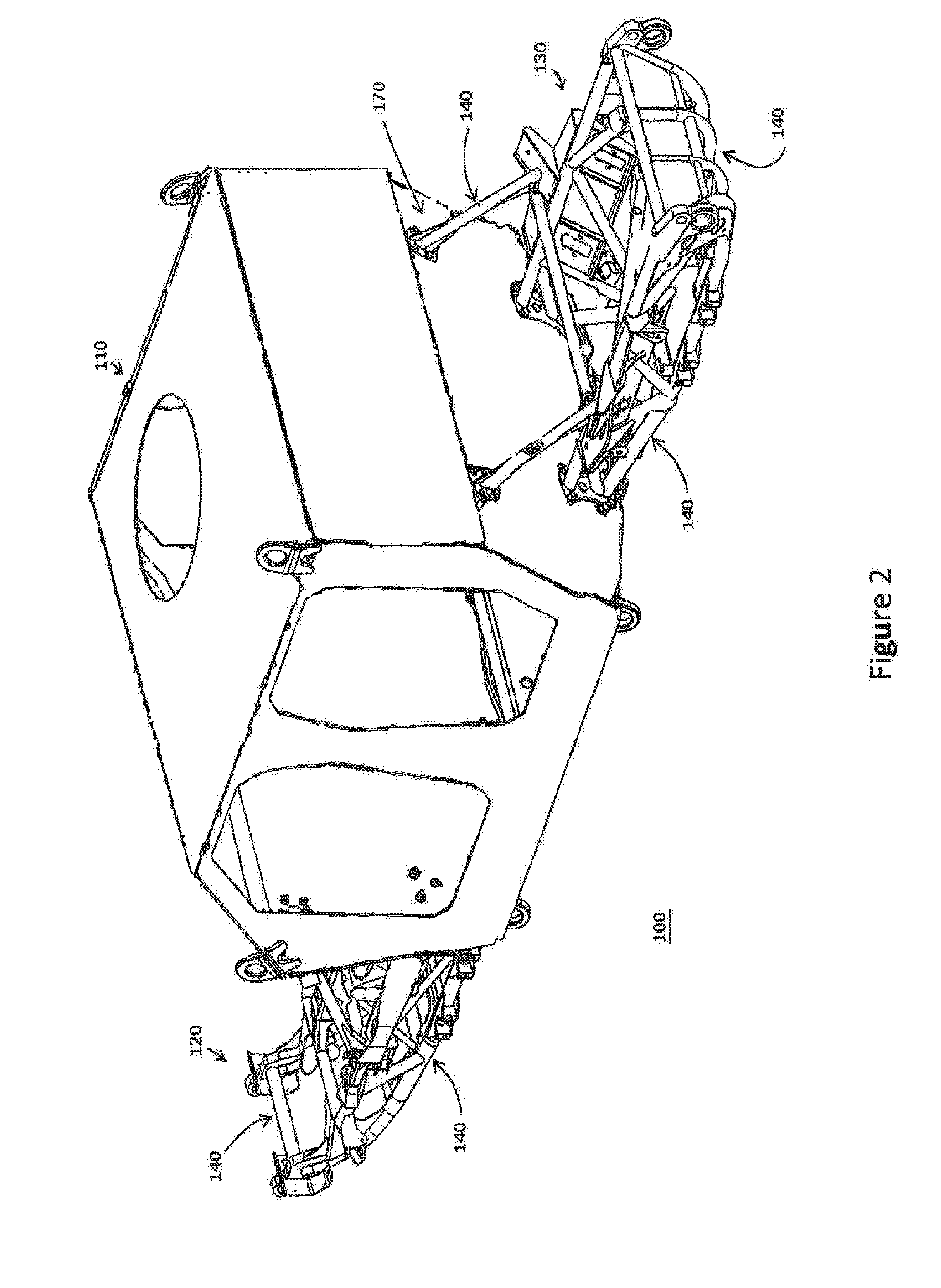Modular Vehicle Architecture
a module-based vehicle technology, applied in the field of mechanical engineering, can solve the problems of reducing payload capacity, not being easy to maintain, and compromising visibility, and achieve the effect of improving maintainability and manufacturing process
- Summary
- Abstract
- Description
- Claims
- Application Information
AI Technical Summary
Benefits of technology
Problems solved by technology
Method used
Image
Examples
Embodiment Construction
[0089]Referring to FIGS. 1 & 2, a protected military vehicle 100 comprising a protected capsule module 110, a front sub-frame module 120 and a rear sub-frame module 130 in accordance with one embodiment of the present invention is shown. The front sub-frame module 120 comprises a distal end 120a and a proximal end 120b, at which are located connections 120c (FIGS. 4 & 6) with the protected capsule module 110. Proximal end 120b of front sub-frame module 120 may be attached to protected capsule module 110 of the vehicle 100 utilising at least one of the connections 120c shown in better detail in FIGS. 5 and 6, significantly increasing the efficiency of assembling vehicle 100. Rear sub-frame module 130 comprises a distal end 130a and a proximal end 130b. Proximal end 130b of rear sub-frame module 130 may be attached to capsule module 110 of the vehicle 100 utilising the connections 130c (FIG. 6) shown in better detail in FIG. 5 or 6 significantly increasing the efficiency of assembling...
PUM
 Login to View More
Login to View More Abstract
Description
Claims
Application Information
 Login to View More
Login to View More - R&D
- Intellectual Property
- Life Sciences
- Materials
- Tech Scout
- Unparalleled Data Quality
- Higher Quality Content
- 60% Fewer Hallucinations
Browse by: Latest US Patents, China's latest patents, Technical Efficacy Thesaurus, Application Domain, Technology Topic, Popular Technical Reports.
© 2025 PatSnap. All rights reserved.Legal|Privacy policy|Modern Slavery Act Transparency Statement|Sitemap|About US| Contact US: help@patsnap.com



